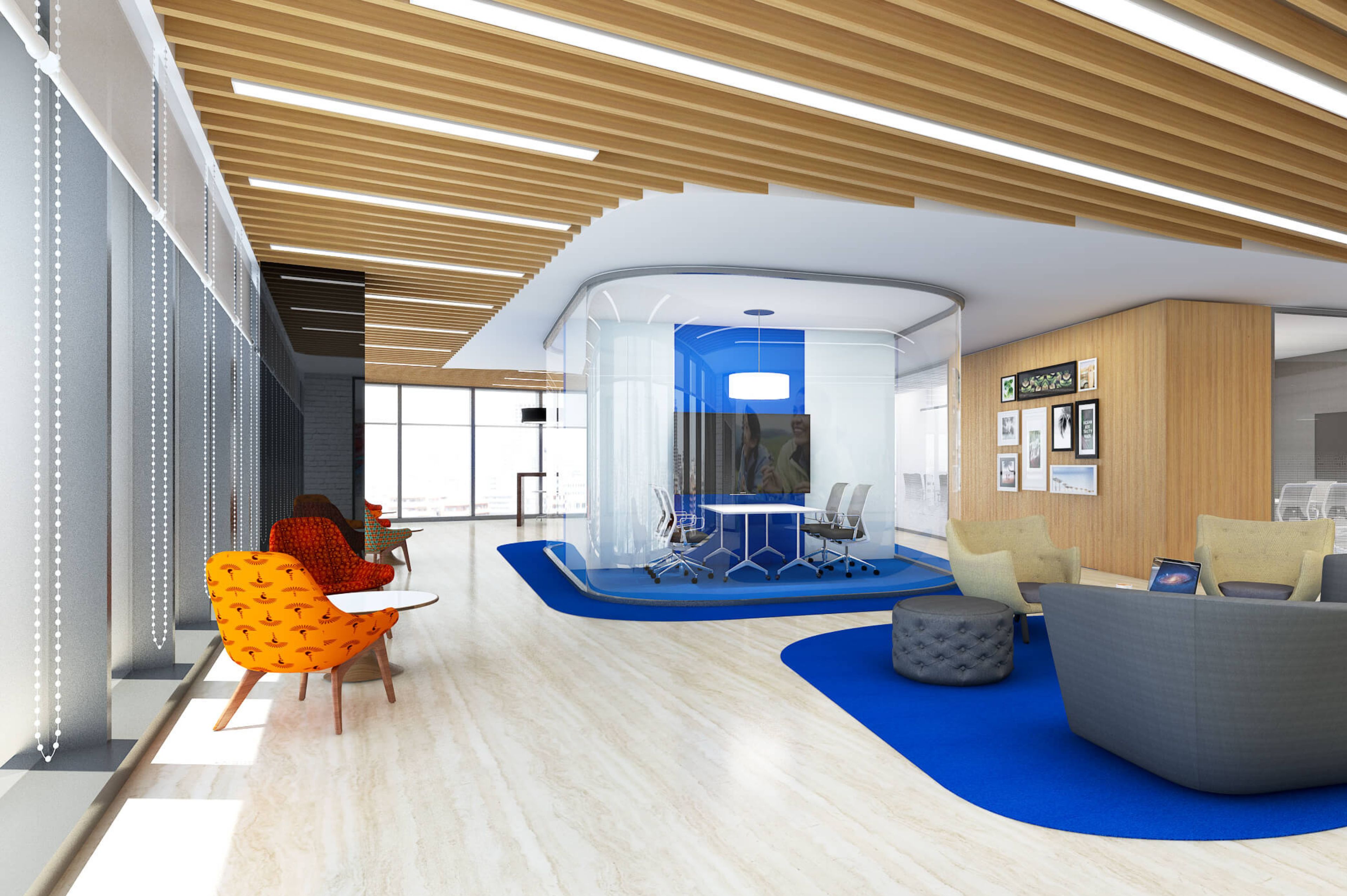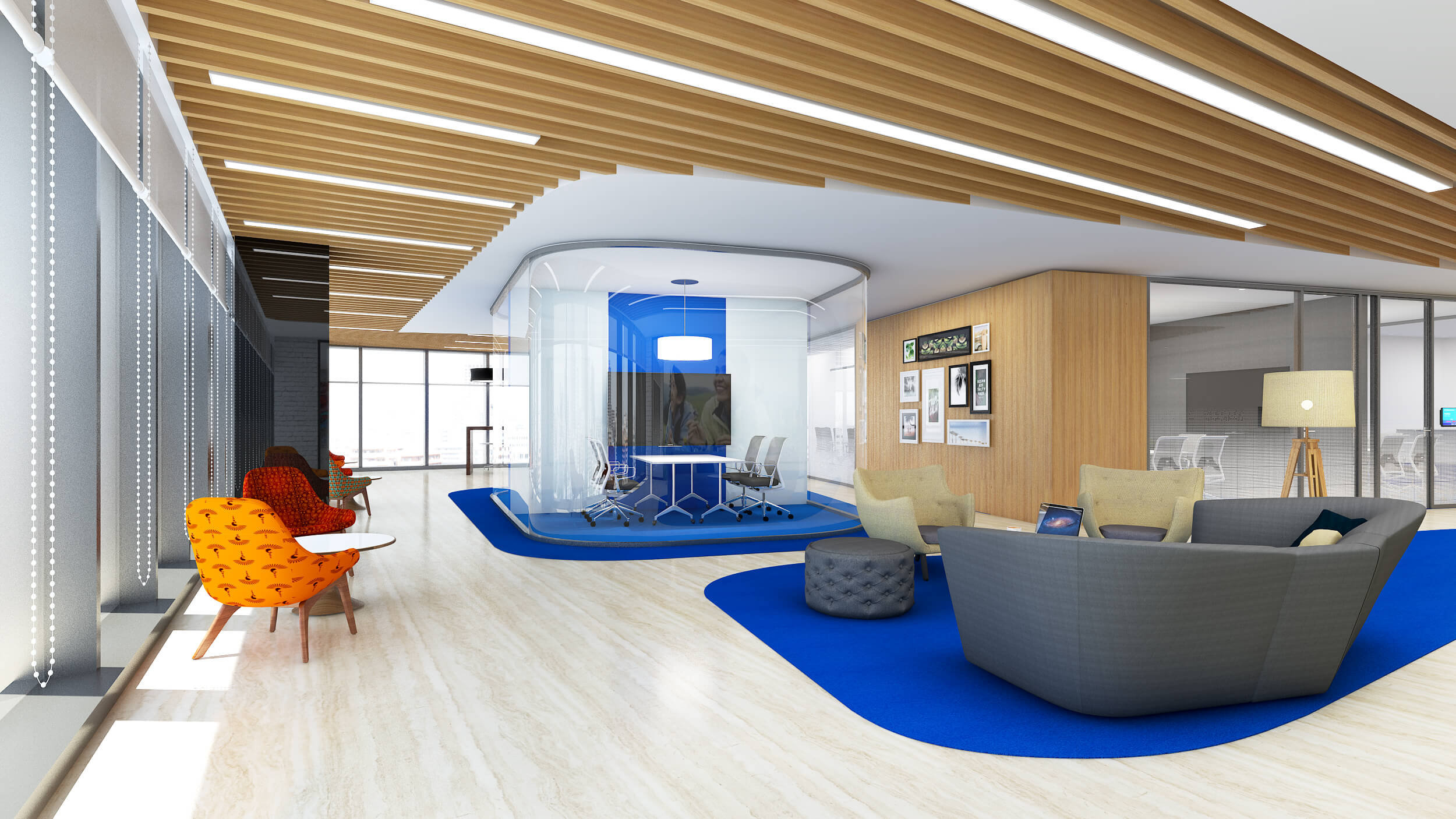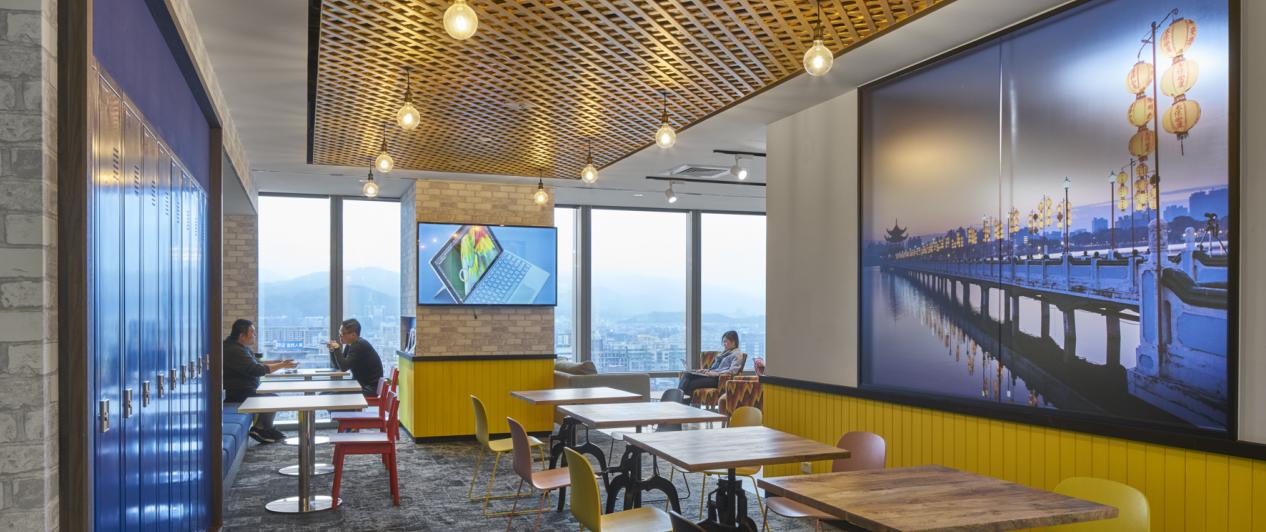
5 Best Office Space Design Strategies for Keeping Employees Happy & Productive
If your company doesn’t have the right office environment, it can be very difficult to keep employees satisfied and motivated. A study by the UK government shows that, on average, firms with low workplace design employee engagement suffer from an operating income that is 32.7% lower than companies with better engagement scores.
By incorporating the right office design strategies, you can ensure that work is not only enjoyable for your employees, but makes business sense as well. Yet it's understandably difficult to figure out what kind of designs will appeal to your team. Here, we have detailed a few simply the best office space design strategies that can go a long way in boosting employee motivation.
Although fluorescent lighting can easily brighten offices, natural daylight is still best for work productivity. A study conducted by Northwestern University shows that workers who have little access to windows get less sleep and experience more problems related to physical health and vitality.
Not only does natural light improve moods and reduce stress, it also helps to improve your circadian rhythm, the internal body clock that regulates a healthy sleep cycle. As a result, workplaces with sufficient daylight can result in as much as a 40% boost in overall sales and productivity.

Toyota, Bangkok by Space Matrix
To optimise employee productivity, the design for Toyota's leasing office in Bangkok strategically maximises exposure to natural light. According to Nijaya Intaraprasong, Space Matrix’s Director for Thailand, Toyota's original setup was very traditional, with workstations hidden away from the light in a straight line. Conversely, this new "open layout around the window area works well with the natural lighting to energise the staff and promote communication between them," Nijaya shares.
You'll be surprised to find that more than 40% of injuries in the workplace are a result of daily repetitive strains due to uncomfortable working positions rather than extreme physical activity.
An article by the Harvard Business Review shared that ergonomics not only clears up such discomfort so that employees can work faster, but also signals to them that their health and well-being are being taken seriously. When employees know that they are being cared for, they are far more likely to reciprocate through engagement and motivation.

White & Case, Singapore by Space Matrix
An easy strategy is to buy office chairs that encourage good posture. Ergonomic chairs can be adjusted on-the-go to match the height and body type of the user, with a sturdy backrest to top it off, which helps boost employee productivity.
It's no wonder that many often find the green outdoors ideal for relaxation. A study published in the Journal of Experimental Psychology shows that plants can increase workplace productivity by as much as 15% because of better perceived air quality, which results in greater concentration levels and workplace satisfaction.

Clifford Chance, Singapore by Space Matrix
While 'lean' minimalist and bare office design can improve workplace efficiency, the inclusion of greenery and colour is essential to making employees feel at home.
Today's top companies--Google, Facebook, Samsung and the like--are departing from individual workspaces towards a more collective model. Not only does collaboration boost team harmony, it also ups efficiency by distributing the workload by specialisation.

Abbott, Mumbai by Space Matrix
For the office of healthcare giant Abbott in Mumbai, the designers faced the challenge of consolidating what was previously six different locations into one seven-story building.
Designer Titir Dey shares, “we thought of collaboration infused within the workspace, and came up with different levels of collaboration that could transition into one another.” This concept took on the form of social spaces on each floor, complete with lounge counters and refreshment points, as well as enclosed pods that can accommodate small meetings of 2-3 people. Formal meeting rooms are not only installed with technology for group sharing, but also have designated areas for 10-12 people to huddle together when necessary.
Key strategies include wide open spaces, common gathering rooms, and the removal of walls separating different departments.
Office design trends still lean towards white walls and monochromatic hues to minimise distractions. In reality, monochromatic colours can actually risk inducing feelings of depression.
Colours, on the other hand, can be tailored to suit your specific business needs. Sprinkles of red and orange can inject a healthy burst of energy and liveliness; dashes of yellow can foster cheerfulness; while blue, green, and pastel shades can inspire much-needed calmness in an otherwise stressful environment.

Microsoft, Taipei by Space Matrix
Partnering with Space Matrix, technology giant Microsoft has capitalised on colours for its office in Taipei. Bright yellow, green, blue, and red hues are infused into the sofas, chairs, and walls to create a dynamic and buoyant space. Colours are also vital in establishing a sense of community and humanity, as walls are painted with vibrant murals that portray various scenes from Taiwan's diverse culture.
Designer Archie Cruda carefully selected the colours to match the different murals in each floor. “For example, we used blue as the accent colour for floor with the riverfront mural and a lively red for the night market.” At the same time, it’s important to retain one unifying element. In this case, timber and pavement colours like black and grey act as the “base colours” that run throughout all five floors of this office.
While it is important for an office space to represent your brand, taking a human-centric approach to workspace design is crucial for fostering employee engagement. A comfortable and healthy team is necessarily a more productive one. Simple tweaks to colour, layout, and decor can bring you a step closer to more devoted and determined team members.
